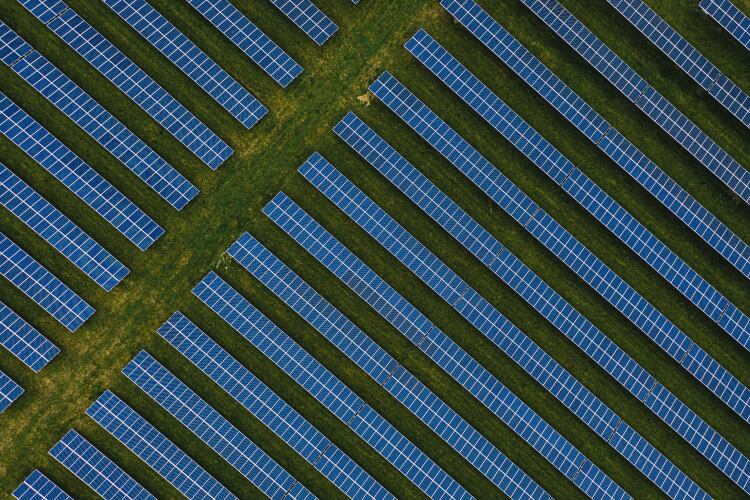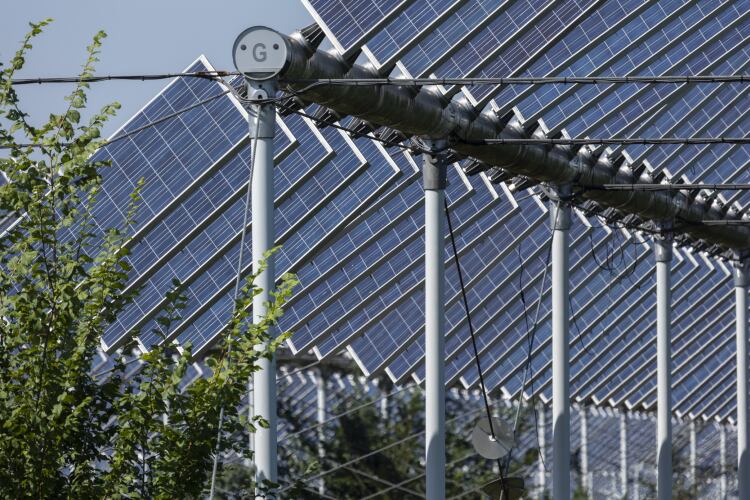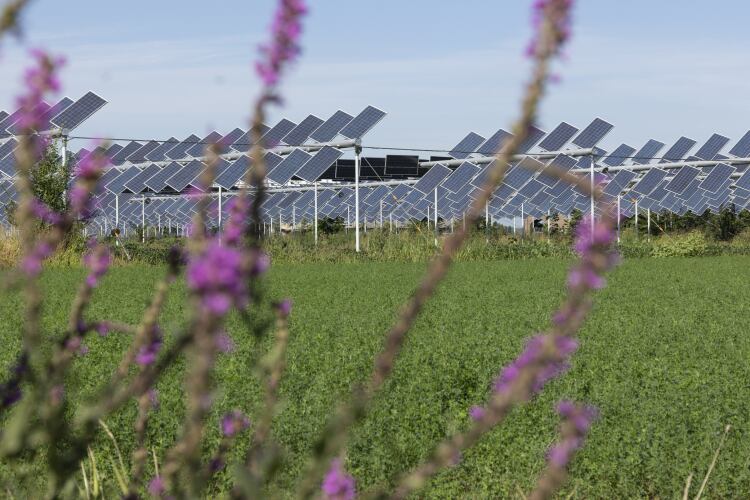The Russian invasion of Ukraine has brought food and energy security to the forefront of political debate in Europe and around the world. Reliance on Russian gas and surging energy prices have demonstrated the importance of developing energy sovereignty, while constrained supplies of Ukrainian grains – exacerbated by Russia’s move to hold the Black Sea ports hostage – have deepened fault lines in the global food system.
The issues of food and energy security are complex and interconnected. It is widely agreed that meeting our collective climate goals – and avoiding comprehensive collapse of existing primary food production systems – will require a swift and decisive transition towards renewables. However, in an increasingly politicised debate, some often powerful voices argue that investments in renewable energy production technologies like solar will come at the expense of food production.
Let’s take the UK as case in point. While trouble at the top of the governing Conservative Party has seen the dispatch of two Prime Ministers in short order – creating a high level of policy uncertainty – as recently as this month The Guardian revealed Ministers planned to ban solar farms from most of England’s farmland. Whether this policy will remain under the new Environment Secretary following the latest round of political upheaval remains to be seen. But the thinking behind the policy is telling, reflecting as it does a concern that investment in solar will impede growth and hit food production.

This belief is a misnomer, according to Lightstar Renewables Vice President Lucy Bullock-Sieger.
“Competing priorities for food and land use have been an argument for centuries, we have an opportunity with agrivoltaics [or AgPV] to address both the clean energy transition and the increased demand for food. This addresses food and energy security. The more food we can produce closer to home, the safer we are, the more energy we can produce closer to our communities without the detrimental effects of fossil fuels, the healthier and more secure we are,” she told FoodNavigator. “Agrivoltaics is good for any region or municipality that wishes to preserve farmland and adopt solar at the same time.”
Co-locating energy and agriculture for ‘mutual benefits’
So, for the uninitiated, what is agrivoltaics? The term refers to the simultaneous use of areas of land for both solar photovoltaic power generation and agricultural production.
This means light must be shared between these two types of production. But this does not necessarily mean we have to accept trade-offs between solar energy generation and crop yields. Quite the reverse, according to Bullock-Sieger, who suggested dual-use solar can actually help improve water retention, soil health and, ultimately, yield.
“We know that water usage can be decreased by almost half on AgPV arrays that have been studied. This is especially important for western US farms as water access and rights are critical,” she said pointing to research carried out by University of Arizona Professor Greg Barron-Gafford.
Barron-Bafford’s work, published in Nature, suggested that agrivoltaics provide ‘mutual benefits’ across the food–energy–water nexus. “We find that shading by the PV panels provides multiple additive and synergistic benefits, including reduced plant drought stress, greater food production and reduced PV panel heat stress,” the researchers concluded. Their study found that tomatoes fruited twice as much in co-located agriculture and solar photovoltaic infrastructure as in an open field test plot.
Instillation of AgPV arrays can also support the transition towards more regenerative farming systems, Bullock-Sieger added. “Many AgPV arrays are also helping farmers to pivot to regenerative agriculture because low-till and vegetation under the array is beneficial for solar production – less soiling on the panels and panels perform better when vegetation like food crops or hay cools the environment under the panels,” we were told. Work is currently being carried out by the American Farmland Trust, the US Department of Energy and the National Renewable Energy Lab to study soil carbon and nutrient data on arrays around the country in order to quantify impact on soil health and carbon.

The key to successfully co-locating energy and food production is smart design, according to the renewables expert. “With single-axis tracking, the shade is distributed evenly throughout the day, and the rows are spaced enough to allow ample sunlight and room to navigate equipment through the array. The racking that holds the panels are between 7.5-8 feet tall,” the US-based solar proponent explained. “There are very boutique versions of small-scale AgPV in MA and Europe, but we are building arrays that allow for maximizing agricultural production and solar at the same time.
“We have come so far in understanding how much sunlight and soil nutrients plants need. It isn’t so much the technological advancements, but the sheer will to try backed by making financial sense. Single-Axis tracking, when the panels move with the sun maximizing sunlight absorption, has become less expensive and more conducive to AgPV than fixed-tilt arrays. We can use bifacial panels which catch sunlight on both the top and bottom of the panels – we know that sunlight and irradiance reach beneath the arrays because we can capture energy on the back of the panels. We’ve been marrying existing technology and maximizing it for better agricultural and solar production.”
Farm viability and income diversification
As well as offering improved resilience to farms facing heat and water stress, Bullock-Sieger believes that co-locating food and energy production can serve another important function, helping farmers operating on all-too-thin margins boost profitability and diversify incomes.
“Farm viability is a huge issue across the US, which is the common denominator for AgPV. In the northeast and midwest, we can preserve family farms and meet clean energy goals. In the southeast and west, we can reduce water usage, improve soil health through regenerative practices, and preserve family farms,” she explained.
According to the agrivoltaics advocate, the challenges facing rural communities demonstrate the ‘need for farmers to diversify their income’. “The COVID supply chain crisis was a perfect example of that. Stabilising finances for a solar lease and AgPV stipend can mean the difference between keeping the family farm or selling it to a permanent housing or commercial developer,” she observed.

